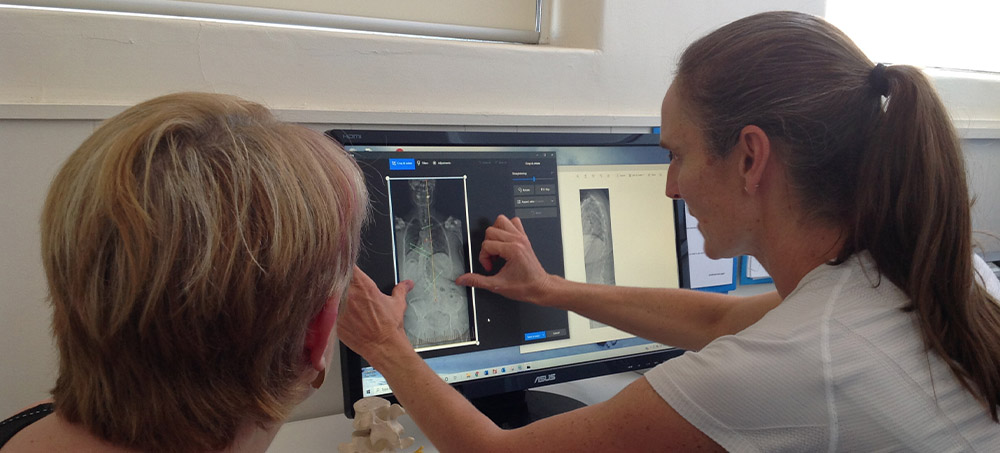A thorough assessment is where it all starts - without this, proper recommendations cannot be made.
There are different types of scoliosis, so definitive diagnosis is important. Some scoliosis's just sit around quietly in a person's body and do absolutely nothing throughout their life, so please do not feel that having scoliosis means a list of things is going to happen! There is a lot of unnecessary fear surrounding scoliosis.

What is important is to have a thorough assessment with a practitioner specifically trained in scoliosis, so that they may assess your individual presentation and consider the variety of factors related to you and your life. Only once all this has been considered, recommendations can be made.
Our recommendations follow the Guidelines produced by the International Scientific Society on Scoliosis Orthopaedic and Rehabilitation Treatment (SOSORT) and the Scoliosis Research Society (SRS) with “Looking after the person, not just the curve” staying at the front of our minds always. This is what true patient centered care is.
Initial Assessments
Initial Assessments are booked with one of our Physiotherapists (all of whom have internationally recognised training with the BSPTS Rigo Concept) and take place in one of our private consultation spaces.
The assessment is a very full and thorough 60 minutes consultation and includes:
- Detailed client history (rehabilitation path explored thus far, family history of scoliosis, if any specialists have been seen, any symptoms being experienced, current and past injuries/incidents, any existing medical conditions etc)
- Hypermobility assessment
- Neurological assessment (reflex testing)
- Postural assessment (includes determination of whether curve is structural or functional, close assessment of imbalances and compensations, leg length discrepancies considered, postural photos if appropriate and permissions given). For this postural assessment, we ideally like to view your torso directly, so we will ask if you feel ok to briefly remove your shirt. Female clients will still keep bras/crop tops on.
- Assessment for associated hip and shoulder asymmetries
- Radiological assessment, if x-rays have been had (measurement of scoliosis Cobb angles, rotations, balances and imbalances in both the frontal and sagittal planes, pelvic indexes plus more)
- Determination of Rigo curve classification (where appropriate – scoliosis type dependent)
- Quality of life questionnaire/s (where appropriate)
Following your Initial Assessment, your physiotherapist will discuss with you the best pathway forward for your specific circumstances. You should feel well educated and clear with what needs to be done and why.
Recommendations are made following the Guidelines produced by SOSORT (International Scientific Society on Scoliosis Orthopaedic and Rehabilitation), and the SRS (Scoliosis Research Society) and importantly follow the patient centered care approach of the BSPTS.
We strongly promote open dialog between all practitioners involved in your care and happily communicate our assessment findings and thoughts to any specialists and practitioners also involved in your care: past present or future. The best outcomes are achieved when we are all working together.
